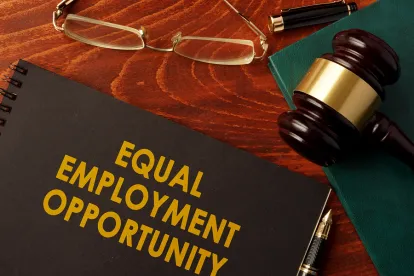A few years ago, we reported on regulations governing federal contractors’ nondiscrimination obligations with respect to LGBT employees. The Trump Administration has taken steps to roll back many Obama-era efforts, although the Executive Order and rules establishing LGBT-related protections for employees of federal contractors remain in force, at least for now. The Second Circuit recently decided a high-profile case that affirmed the legal basis for those obligations and extended them beyond the federal contractor community. In doing so, the Second Circuit rejected the Trump Justice Department’s position with respect to LGBT nondiscrimination.
The case, which has generated significant press coverage, deserves close attention from all employers, including contractors, as LGBT nondiscrimination rules continue to develop in courts, executive agencies, and legislatures. In this post, we examine the considerations for government contractors and outline some best practices for companies that work with the federal government.
What Is the Latest Case About?
On February 26, the U.S. Court of Appeals for the Second Circuit held that Title VII of the Civil Rights Act of 1964 prohibits employment discrimination on the basis of sexual orientation. The ruling is significant because although the text of Title VII does not explicitly refer to sexual orientation, it does prohibit discrimination on the basis of “sex.” The court reasoned that “sexual orientation discrimination is a subset of sex discrimination … making it impossible for an employer to discriminate on the basis of sexual orientation without [unlawfully] taking sex into account.” The procedural posture of the case further enhanced its impact: the court issued its opinion after convening en banc, meaning that the decision came from a majority of the full court, not just a typical three-judge panel.
This decision aligns the Second Circuit with the Seventh Circuit, which issued a similar en banc decision last year, and sharpens a conflict with the Eleventh Circuit, in which a panel reached the opposite conclusion. The Second Circuit’s holding adopted the position of the Equal Employment Opportunity Commission over that of the Department of Justice; the EEOC and DOJ submitted dueling briefs on opposite sides of the issue. The breakdown of the votes also surprised some observers, with conservative-leaning judges concurring in the outcome, if not the majority’s reasoning, and an Obama appointee writing the lead dissent. That dissenting judge, Senior Circuit Judge Gerard Lynch, wrote that the constraints of statutory interpretation forced him to “respectfully, and regretfully, dissent.”
What Is the Impact of the Decision?
In many ways, the Second Circuit updated the law for Title VII-covered employers to bring it in line with the nondiscrimination standards that government contractors already follow. Title VII applies to government contractors largely through the Labor Department’s enforcement of the Johnson-era Executive Order 11246, which is informed by the case law that has developed around Title VII. However, contractors are also subject to other LGBT-focused nondiscrimination requirements under Executive Order 13672. President Obama issued that Order in 2014, and it became effective nearly three years ago. We explained those developments on our blog.
The text of Executive Order 13672 is broader than the text of Title VII. The Executive Order explicitly added “sexual orientation and gender identity” to the list of protected characteristics upon which discrimination is prohibited (race, color, religion, sex, and national origin). Those terms do not appear in Title VII, but the Second Circuit held that the word “sex” in Title VII includes the concept of sexual orientation. (Only sexual orientation—the “LGB” portion of the acronym—was at issue in the case. The law governing gender identity—the “T”—is also an active area of litigation.)
In our experience, businesses and contractors were leading the way with LGBT nondiscrimination, leaving the government to play catch-up and creating few, if any, new obligations. The compliance burdens of the Executive Order have also been light, especially compared to other socio-economic regulations that apply to government contractors. For instance, contractors have no detailed reporting requirements for LGBT-identified employees, and they need not create separate affirmative action programs as they must for protected veterans and employees with disabilities.
Nevertheless, given the increased visibility of LGBT nondiscrimination issues, contractors should take this as an opportunity review their compliance programs to ensure that they avoid potential pitfalls.
- Contractors must clearly advertise their acknowledgement of equal opportunity law. For instance, contractors must include sexual orientation and gender identity in solicitations, but they may do so in multiple ways. They can list out all of the protected bases, taking care to include “sexual orientation and gender identity.” Alternatively, they may simply state “equal opportunity employer,” as long as their practices do indeed protect LGBT employees and applicants. In other words, contractors should not attempt to abbreviate protected bases or pick and choose among the categories to list.
- Contractors should take care to protect the confidentiality of employee and applicant personal information, especially with respect to medical status of transgender employees.
- The Second Circuit acknowledged long-standing Supreme Court precedent addressing the illegality of discriminating based on “gender stereotyping.” Contractors should ensure that dress and grooming codes are designed carefully to avoid conflicts with nondiscrimination obligations.
What Might We See Next?
Litigation. We would not be surprised to see a petition to the Supreme Court, although the precise timing is unclear. The Second and Seventh Circuits both overruled prior precedents. In the Seventh Circuit, where the plaintiff won, the employer decided not to pursue a cert petition at all. In the Eleventh Circuit, the plaintiff (who lost) sought rehearing en banc, was denied, and then filed a cert petition that the Supreme Court denied in December 2017. The cert denial could indicate that the four Justices thought to be most supportive of LGBT protections may be waiting for the issue to develop further in the circuits. No other circuits are anticipating en banc review in the near term, but cases continue to percolate in district courts and more circuit-level developments could arise soon. However, it could take at least another year before a case comes before the Supreme Court.
Administrative Action. In the meantime, Executive Branch action continues. Many members of the labor and employment bar expected the Trump Administration to roll back LGBT protections, particularly as a draft order began circulating in early 2017. That order would have allowed discrimination by organizations (including federal contractors) “in accordance with the belief that marriage is or should be recognized as the union of one man and one woman, sexual relations are properly reserved for such a marriage, [and] male and female and their equivalents refer to an individual’s immutable biological sex as objectively determined by anatomy, physiology, or genetics at or before birth.”
The final version of Executive Order 13798 (signed on May 4, 2017) lacked those explicit carve-outs, but did direct the Attorney General to “issue guidance interpreting religious liberty protections in Federal law.” Religious liberty claims frequently arise in challenges to protections for LGBT individuals, although they played no significant role in the Second Circuit’s decision. The Department of Justice published that guidance in an October 2017 memo. It explained that “to the greatest extent practicable and permitted by law, religious observance and practice should be reasonably accommodated in all government activity, including employment, contracting, and programming.” The memo set forth a series of principles, many applicable to federal contracts: “As a general matter, the federal government may not condition receipt of a federal grant or contract on the effective relinquishment of a religious organization’s hiring exemptions or attributes of its religious character…. In particular, agencies should not attempt through conditions on grants or contracts to meddle in the internal governance affairs of religious organizations or to limit those organizations’ otherwise protected activities.”
This language is in some tension with Labor Department guidance that establishes a more circumscribed religious liberty exemption to the LGBT nondiscrimination order. In particular, religious organizations with government contracts are covered by the First Amendment-based guarantees with regard to employees who are fairly described as “ministers,” and they may offer employment preferences to “members of a particular faith.” However, the exemption “does not allow religious organizations to discriminate in employment on the basis of race, color, sex, sexual orientation, gender identity, or national origin.”
Legislation. Finally, we cannot rule out the possibility of legislative action in the coming months, as Congress prepares the FY2019 National Defense Authorization Act. During the consideration of the FY2017 NDAA, a proposed amendment that could have weakened the protections in President Obama’s Executive Order prompted shouts of “Shame!” on the House floor and discussions of a veto threat.
* * *
The Second Circuit’s opinion is a key development in a field of law where employers, and particularly government contractors, should pay close attention. While the decision may not require immediate changes to procedures, contractors should use this opportunity to perform a check-up on their employment nondiscrimination programs.





 />i
/>i

